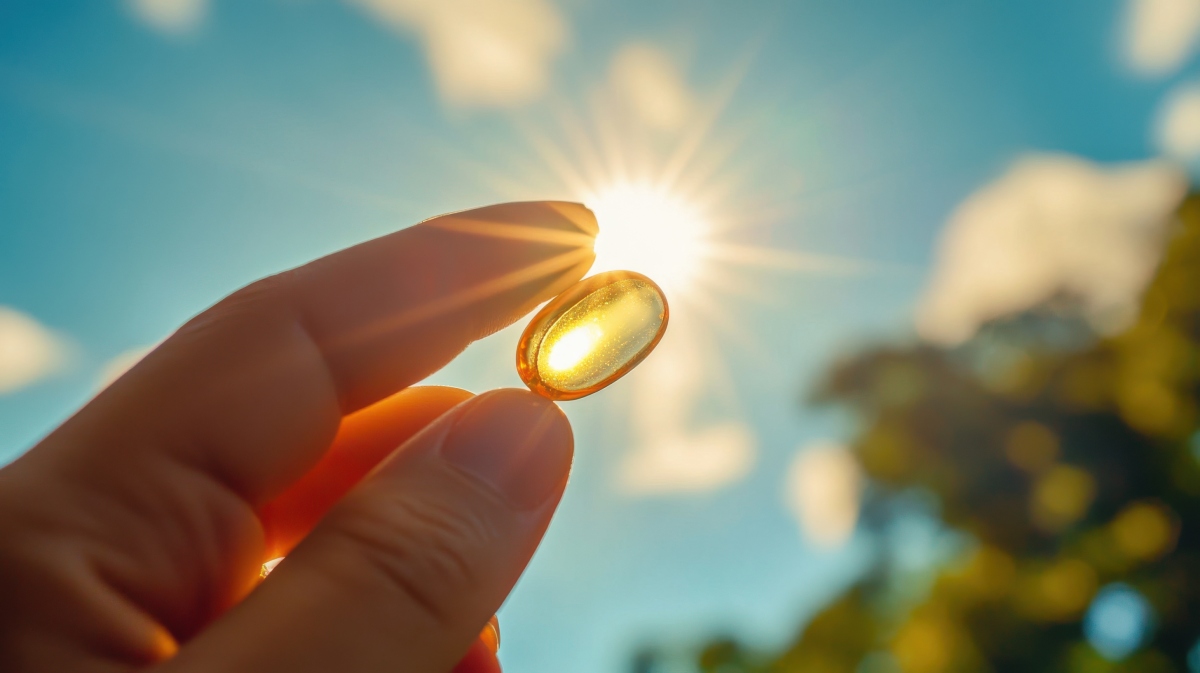
From Sun to Strength: The Importance of Vitamin D in Your Life
Home > Blog
Vitamin D is the sunshine vitamin because 90% to 95% of a person’s Vitamin D requirement comes from exposure to sunlight.
In fact, the best source of Vitamin D is sunlight exposure. Usually 10–15 minutes of sunlight 2-3 days a week (between 10 a.m. and 3 p.m) will meet most peoples Vitamin D requirement (Hossein-nezhad & Holick, 2013).⠀
Unfortunately, people who live in higher latitudes (distant from the equator) have lesser incidence and duration of sunlight. Therefore, people who live in areas like New England have a decreased ability to produce vitamin D.⠀
I can say from my experience in endocrinology that >80% of my patients in New England do not meet the requirement of Vitamin D.⠀
Vitamin D Sources and Sunlight Benefits
Fun Fact: Sun exposure results in production of beta- endorphin (the feel good hormone), that’s why people feel better when they are exposed to sunlight. This probably explains why some adults are addicted to tanning beds.⠀
A small amount of vitamin D can be obtained from dietary sources including fatty fish (salmon, tuna) mushrooms, egg yolk. In addition, in the USA foods including milk and cereal are fortified (vitamin D is added) with vitamin D. However, it might be difficult to obtain adequate vitamin D from food sources alone.
Symptoms of Low Vitamin D and How to Improve It
- Signs you have low vitamin D include fatigue (tiredness), bone pain, muscle weakness or muscle aches. Vitamin D deficiency can increase the risk of osteoporosis (fragile/brittle/weak bones) and cause bone fractures.
- The catch is that not everyone with low Vitamin D will have these symptoms. If your vitamin D is low and you are concerned about skin cancer and wrinkling from sun exposure, you can get over the counter Vitamin D based on your level. Of course, talk to your provider and they can guide you accordingly.⠀
- The Endocrine society recommends a daily intake of vitamin D (600- 2,000 IU ) to prevent deficiency and promote bone health.
⠀
https://www.ncbi.nlm.nih.gov/pmc/articles/PMC3761874/⠀
Vitamin D2 vs. D3: Which is Better for You?
- There are two forms of Vitamin D. Vitamin D2 and D3. ⠀
- There are conflicting studies on efficacy between Vitamin D2 and D3.
- However, recent studies favor D3 over D2 (Sizar et al., 2020).
- D2 requires a prescription from your provider whereas D3 does not.
Personal Recommendation:
” I personally take D3 2,000 IU during the winter & 1,000 IU during the summer to maintain my D level >30 ng/ml.⠀”
– Board Certified Nurse Practitioner: Geeta Sharma
https://www.ncbi.nlm.nih.gov/pmc/articles/PMC3761874/⠀

Prevent Future Health Emergencies!
Schedule a 60-minute comprehensive consultation
with our Board Certified Nurse Practitioner To Learn
About Power of Vitamins, Weight Loss & To see
How You Can Have Physical Wellbeing.
Your 60 Minutes Today Can
Transfrom Your Life Forever!


